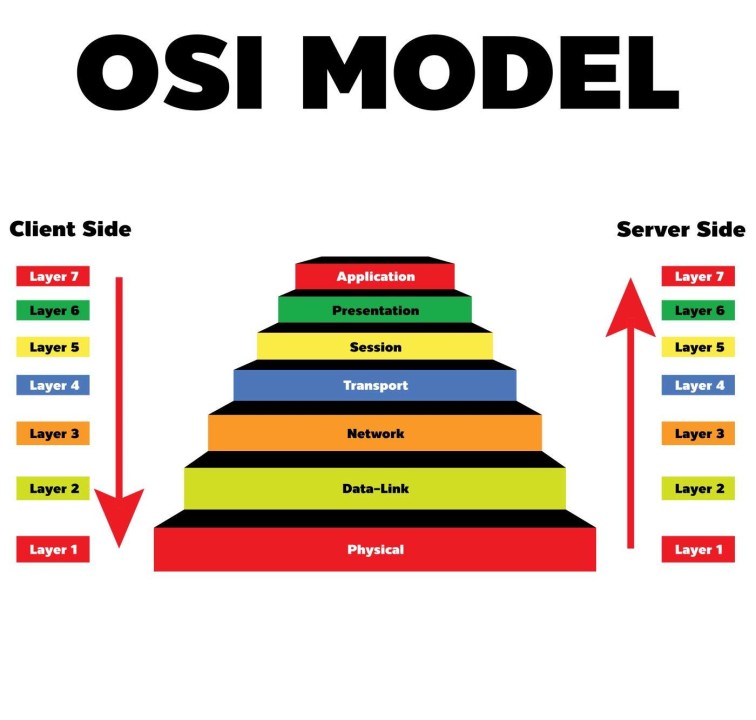
The OSI Model (Open Systems Interconnection) is a conceptual framework that standardizes the functions of a telecommunication or computing system into seven distinct layers. Each layer serves a specific function and interacts with the layers directly above and below it, ensuring effective communication between different systems.
1. Layer 1: Physical Layer
The Physical Layer is the lowest layer of the OSI Model. It deals with the physical connection between devices, including cables, switches, and network interface cards. This layer is responsible for transmitting raw data bits over a physical medium.
2. Layer 2: Data Link Layer
The Data Link Layer ensures error-free data transfer between two devices on the same network. It packages data into frames and manages the MAC (Media Access Control) addresses, which are unique identifiers assigned to network interfaces.
3. Layer 3: Network Layer
The Network Layer is responsible for data routing and forwarding. It determines the best path for data packets to travel from the source to the destination. This layer uses logical addressing, such as IP addresses, to identify devices on the network.
4. Layer 4: Transport Layer
The Transport Layer ensures complete data transfer and manages error recovery. It segments and reassembles data from higher layers, providing reliable or unreliable delivery (TCP or UDP) as required.
5. Layer 5: Session Layer
The Session Layer establishes, manages, and terminates connections between applications. It controls the dialog between two devices, ensuring that data exchange occurs in a coordinated manner.
6. Layer 6: Presentation Layer
The Presentation Layer translates data between the application layer and the network format. It handles data encryption, compression, and translation, ensuring that data is presented in a readable format.
7. Layer 7: Application Layer
The Application Layer is the topmost layer of the OSI Model. It provides network services directly to end-users and applications, such as email, file transfer, and web browsing. This layer interacts with software applications to implement communication protocols like HTTP and FTP.
Understanding the OSI Model is essential for anyone involved in networking, as it provides a structured approach to troubleshooting and designing networks.
